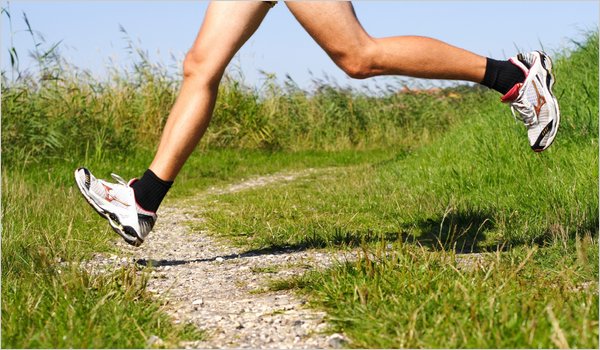Dr. Tanaka, a runner, once tried it himself. He was recovering from a knee injury, and an orthopedist told him to stay away from hard surfaces, like asphalt roads, and run instead on softer surfaces, like grass or dirt. So he ran on a dirt path runners had beaten into the grass along an asphalt bike path.
The result? “I twisted my ankle and aggravated my injury while running on the softer and irregular surface,” he said.
In the aftermath of his accident, Dr. Tanaka said he could not find any scientific evidence that a softer surface is beneficial to runners, nor could other experts he asked. In fact, it makes just as much sense to reason that runners are more likely to get injured on soft surfaces, which often are irregular, than on smooth, hard ones, he said.
His experience makes me wonder. Is there a good reason why many runners think a soft surface is gentler on their feet and limbs? Or is this another example of a frequent error we all make, trusting what seems like common sense and never asking if the conventional wisdom is correct?
Perhaps a runner who, like me, strikes the ground with her forefoot instead of her heel, might risk more injuries on softer ground. After all, every time I push off on a soft surface, I twist my foot.
Exercise researchers say there are no rigorous gold-standard studies in which large numbers of people were assigned to run on soft or hard surfaces, then followed to compare injury rates.
There’s a good reason for that, said Stuart J. Warden, director of the Indiana Center for Translational Musculoskeletal Research at Indiana University. It’s too hard to recruit large numbers of people willing to be randomly assigned to one surface or another for their runs.
“I think the reason people haven’t answered that question is that it is not an easy question to answer,” Dr. Warden said.
When Dr. Willem van Mechelen, head of public and occupational health at VU University Medical Center in Amsterdam, searched for published studies on running injuries and how to prevent them, he, too, concluded that there were no good studies that directly support running on softer ground. “Significantly not associated with running injuries seem age, gender, body mass index, running hills, running on hard surfaces, participation in other sports, time of the year and time of the day,” Dr. van Mechelen concluded.
So what is going on? It seems obvious that the forces on your legs and feet are different depending on whether you run on soft packed dirt or on hard concrete. Why aren’t injury rates affected?
An answer that many accept comes from studies that addressed the question indirectly. In several of them, study subjects ran on plates that measured the force with which they struck the ground. Instead of varying the hardness of the ground, the researchers varied the cushioning of the shoes. More cushioning approximated running on softer ground.
Over and over again, studies like these found that the body automatically adjusts to different surfaces — at least, as mimicked by cushioning in shoes — to keep forces constant when foot strikes plate.
That finding makes sense, Dr. Warden said. If you jump from a table to the floor, you automatically bend your knees when you land. If you jump on a trampoline, you can keep your knees stiff when you land. Something similar happens when you run on different surfaces.
“If you run on a hard surface, your body decreases its stiffness,” Dr. Warden said. “Your knees and hips flex more. On a soft surface, your legs stiffen.” Running on a soft surface “is basically a different activity,” he said.
But those studies did not actually measure forces inside the body, Dr. van Mechelen noted. Instead, they used biomechanical modeling to estimate those forces.
“It is models, so God knows whether it is true,” Dr. van Mechelen said. “But to me it doesn’t seem far-fetched.”
Dr. Warden said some people adapt quicker than others to running surfaces, and he advised that anyone wanting to change from a soft to a hard surface, or vice versa, play it safe and make the change gradually.
Changing your running surface, Dr. Warden said, “is much like increasing your mileage, changing your shoes or some other aspect of your training program.” Abrupt changes can be risky.
But with no evidence that softer surfaces prevent injuries, there is no reason to run on softer ground unless you like to, Dr. Warden and other experts said. Dr. van Mechelen tells runners to get a pair of comfortable shoes and run on whatever surface they prefer.
Dr. van Mechelen, a runner himself, says his favorite surface is asphalt. Mine is too.
My coach, Tom Fleming, never suggested soft surfaces and never thought they prevented injuries. And, he said, there’s a good reason to run on asphalt, at least if you want to compete.
“Most road races are on hard roadways,” he told me. “So let’s get used to them.”
........................................................................................................................................................................................................
A version of this article appeared in print on July 19, 2011, on page D5 of the New York edition with the headline: For Runners, Soft Ground Can Be Hard on the Body.

